What can I do with Hawthorn Berries?
The fruits are easy to identify and collect in large quantities and can be used to make fruit leathers (another name for a fruit roll-up),…
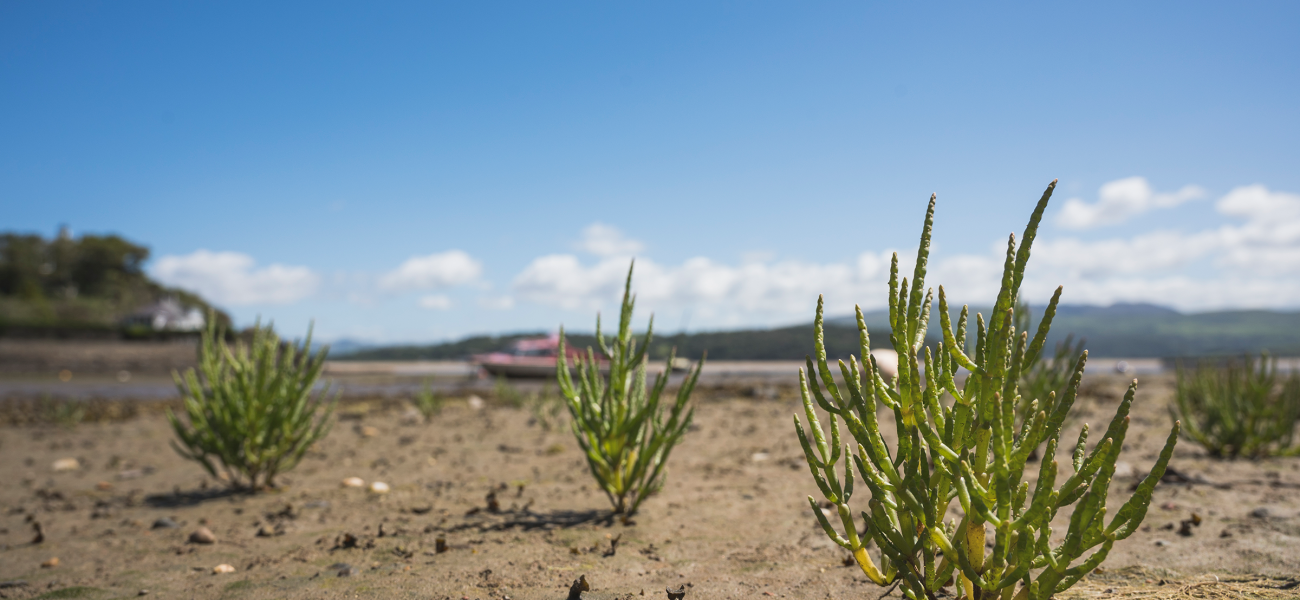
29th June 2019
Marsh Samphire (Salicornia europaea) has little to do with the similarly-named Rock Samphire other than their location and a vaguely similar taste. Marsh Samphire, AKA Glasswort, is found in estuary mud and the intertidal edges of creeks and some muddy harbours.
You aren’t going to come back from a foraging mission for Marsh Samphire without risking muddy feet – it grows in the rich mud of estuaries and salt marshes, almost exclusively in the intertidal zone just below the MHW mark. It is found all around the coast of the UK – although scarcely seen on rocky, sandy or exposed shores. The edges of creeks and smaller rivers that merge into gently lapping waves are always worth investigating. I have found it almost exclusively in the intertidal zone (the area of beach/shore exposed at low tide, but covered twice a day by water), although I have occasionally found lonely examples trying to survive well above the waterline. Marsh Samphire is a halophyte, a plant that thrives in saline conditions. The cells of the plant contain a solution of sodium salts that is strong enough to overcome the osmotic pressure of the seawater that surrounds it at high tide. In East Anglia it has been prized as a local delicacy, and often sold alongside fresh fish and other seafoods, and has also been used as source of salt for the glassmaking industry – hence the alternative name of ‘Glasswort’. Piles of the plant were burned and then the ash mixed in with sand to make a soda-based (rather than potash-based) glass. It is claimed that there was ‘no English word’ for the plant prior to the arrival of Venetian glassmakers to England around 4-500 years ago. In Lancashire Marsh Samphire has been traditionally pickled, as it has in most populated coastal areas of the UK. You will also find bundles of Samphire for sale in supermarkets, either on the fish counter or packaged in plastic. These are cultivated species, often grown indoors or in climate-controlled conditions far from the sea.
Marsh Samphire is edible raw, steamed or pickled. One traditional way to eat it involves holding it by the root and stripping the flesh from the stem with your teeth. The succulent flesh has a salty taste, with a hint of the iodine you find with seaweed. Tradition dictates that it shouldn’t be harvested before the Summer Solstice, but it is edible throughout the growing cycle. It is found above ground from the start of the Spring warming right until the return of colder weather in late September. Regional variation and temperature will dictate the length of that season. Pickling is the traditional way to preserve this plant, offsetting the natural saltiness and making it useful as an addition to fish dishes year-round. I treat it a little like a miniature, salty asparagus and boil it (or steam) and then serve with melted butter or a suitable oil.
It is best described as a very small, mud-dwelling cactus and that pretty much covers it. Each plant may have several primitive, branching stems but may also appear as a solitary stem if it has been disturbed by the action of waves or even trampling. From later Spring until late Summer you may see ‘carpets’ of Marsh Samphire growing in flat muddy areas at low tide, and it is easy to distinguish it from other salt-loving plants also found in that environment.
There are several other species within the Salicornia genus that are found on the shores of the UK, but none of these are toxic and even experts can struggle to tell the difference. All plants collected from estuaries and muddy coastal areas must be washed before eating to remove mud and any potential contaminants that may have been deposited on the surface.
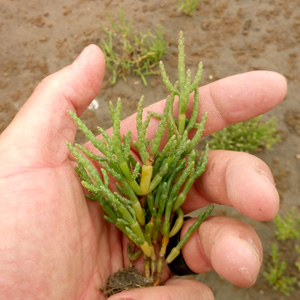
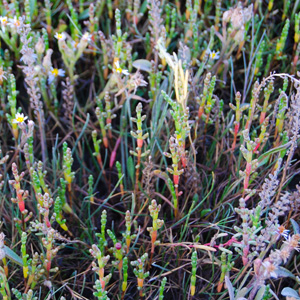
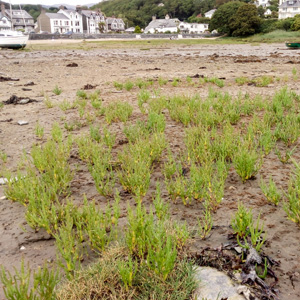
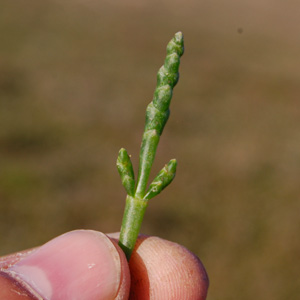
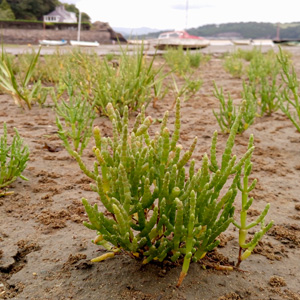
Foraging and hunting for wild food is a potentially hazardous activity. Whilst we try to make sure these wild food guides are as accurate as possible there is ALWAYS the possibility of misidentifying a plant or other item and the descriptions given might also apply to similar toxic plants. Common names cannot be relied upon as they change from region to region, and there are some similar names for very different plants.
You should always be confident of the identification of a plant, fungus or lichen BEFORE you touch it and especially before you put it anywhere near your mouth. The best way to do that is by checking with a good wild flower key or identification book, and ideally cross-referencing between more than one book. We have a blog post on some of the foraging guide books that we recommend HERE. We also deliver foraging and wild foods training in person and online.
A Mountain Leader with over a decade of experience across the UK and overseas, Richard is our Lead Instructor and a partner in Original Outdoors. He is a specialist in temperate wilderness skills and the wild foods of the British Isles, and also works as a consultant for various brands and organisations. Richard lives in North Wales.
A Life More Wild is the philosophy which underpins everything we do.
It encompasses practical skills, personal development, community learning and a journey to live more intentionally.
The fruits are easy to identify and collect in large quantities and can be used to make fruit leathers (another name for a fruit roll-up),…
North Wales is a fantastic place to look for fungi, with a wide range of habitats and ideal climate. If you’ve been out to a…
This mushroom can be used in stocks, dried and ground down into a powder, or cooked into casseroles, stir fry’s and soups. Our favourite use…
Sloes are ripe before the first frosts these days, but you can use a freezer to imitate the affect of a frost and have some…
